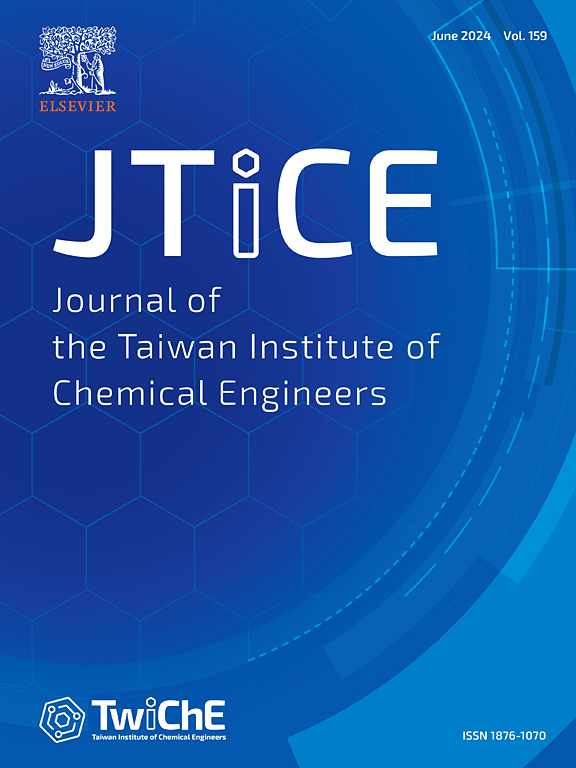Transfer study for efficient and accurate modeling of natural gas desulfurization process
IF 5.5
3区 工程技术
Q1 ENGINEERING, CHEMICAL
Journal of the Taiwan Institute of Chemical Engineers
Pub Date : 2025-02-14
DOI:10.1016/j.jtice.2025.106018
引用次数: 0
Abstract
Background
Accurate modeling of the natural gas desulfurization process enables enterprises to maintain stable production, optimize efficiency, improve product gas quality, and ensure compliance with environmental regulations. Considering the limitations of the availability of industrial data, machine learning models, mechanism models, and hybrid models integrating both may become inefficient or inaccurate.
Methods
To bridge this gap, a transfer learning-based modeling method for the natural gas desulfurization process was proposed. Firstly, a deep neural network model was developed to predict the hydrogen sulfide content in the product gas, based on mechanism-based calculations. Subsequently, a small dataset from the target scenario was utilized to fine-tune model parameters for accurate predictions under actual production conditions.
Significant Findings
The result demonstrates that the established model provides more stable and accurate predictions compared to traditional machine learning models, achieving over a 20 % reduction in prediction error while also enhancing modeling efficiency. Finally, the interpretability analysis of the proposed model reveals that the prediction capability of the model in actual production scenarios was rationally and effectively improved at a low computational cost through transfer learning. This work offers a novel paradigm for developing modeling methods tailored to the practical production processes of natural gas desulfurization.

天然气脱硫过程高效准确建模的传递研究
天然气脱硫过程的准确建模,使企业能够保持稳定生产,优化效率,提高产品气体质量,并确保符合环保法规。考虑到工业数据可用性的局限性,机器学习模型、机制模型以及集成两者的混合模型可能会变得低效或不准确。方法为了弥补这一缺陷,提出了一种基于迁移学习的天然气脱硫过程建模方法。首先,建立了基于机理计算的深度神经网络模型,预测产物气中硫化氢含量;随后,利用目标场景的小数据集对模型参数进行微调,以便在实际生产条件下进行准确预测。结果表明,与传统的机器学习模型相比,所建立的模型提供了更稳定、更准确的预测,在提高建模效率的同时,预测误差降低了20%以上。最后,对模型的可解释性分析表明,通过迁移学习,以较低的计算成本合理有效地提高了模型在实际生产场景中的预测能力。这项工作为开发适合天然气脱硫实际生产过程的建模方法提供了一种新的范例。
本文章由计算机程序翻译,如有差异,请以英文原文为准。
求助全文
约1分钟内获得全文
求助全文
来源期刊
CiteScore
9.10
自引率
14.00%
发文量
362
审稿时长
35 days
期刊介绍:
Journal of the Taiwan Institute of Chemical Engineers (formerly known as Journal of the Chinese Institute of Chemical Engineers) publishes original works, from fundamental principles to practical applications, in the broad field of chemical engineering with special focus on three aspects: Chemical and Biomolecular Science and Technology, Energy and Environmental Science and Technology, and Materials Science and Technology. Authors should choose for their manuscript an appropriate aspect section and a few related classifications when submitting to the journal online.

 求助内容:
求助内容: 应助结果提醒方式:
应助结果提醒方式:


